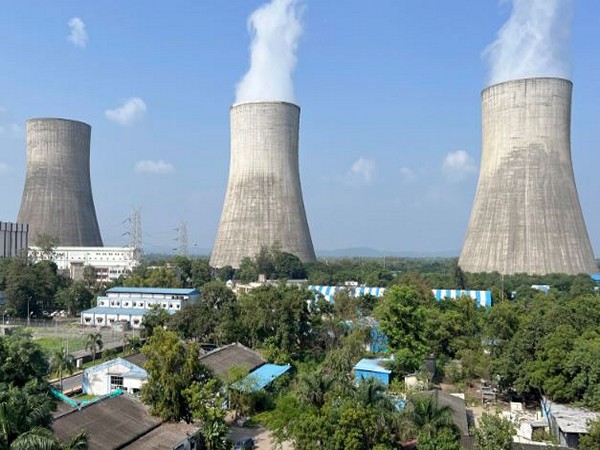
India's Union Budget for 2025-26 has unveiled a transformative "Nuclear Energy Mission," signalling a pivotal shift in the nation's energy strategy.
Indian Minister Jitendra Singh, who holds the Atomic Energy and Space portfolio among others, emphasised that this initiative aims to position nuclear power as a cornerstone of India's energy infrastructure.
A significant allocation of Rs 20,000 crore (about USD 2.3 billion) has been dedicated to the research and development of Small Modular Reactors (SMRs), with an ambitious target to operationalise at least five indigenously designed SMRs by 2033.
Jitendra Singh, in a recent interview, highlighted the vital role of nuclear power in securing India’s energy future, outlining the government's strategic vision to make the country self-reliant in energy production.
Greater transparency and collaboration, he asserted, will accelerate innovation and align with the Aatmanirbhar Bharat (Self-reliant India) vision.
Addressing India's dependence on petroleum imports, he reaffirmed the government's focus on clean and sustainable energy, stressing that nuclear power will be a key pillar of the country’s energy security.
To strengthen domestic nuclear capabilities, foster private sector involvement, and advance nuclear technology, the government has introduced the Nuclear Energy Mission for Viksit Bharat (Developed India), positioning nuclear power as a cornerstone of India’s energy strategy.
As India's economy continues its rapid expansion, the demand for reliable and sustainable energy sources has become increasingly critical.
Traditional fossil fuels, while currently predominant, pose environmental challenges and are subject to market volatility.
Renewable sources like solar and wind are making significant contributions but are inherently intermittent.
In this context, nuclear energy offers a stable, low-carbon alternative that can meet base-load power requirements, thereby enhancing energy security and supporting environmental commitments.
Small modular reactors: A game-changer
Small Modular Reactors represent a significant advancement in nuclear technology.
Typically defined as reactors producing up to 300 MW of electricity per unit, SMRs offer several advantages over traditional large-scale reactors:
Modularity and scalability: SMRs can be factory-fabricated and transported to sites for assembly, reducing construction times and costs.
Enhanced safety: Advanced safety features and passive cooling systems minimise the risk of accidents.
Flexibility: Their smaller size makes them suitable for locations that cannot accommodate larger plants, including remote areas and industrial sites.
Economic viability: Lower capital investment and the potential for incremental capacity additions make SMRs financially attractive.
The government's focus on SMRs aligns with global trends, recognizing their potential to revolutionise the nuclear power industry.
The allocated USD 2.3 billion for R&D underscores India's commitment to developing indigenous SMR technology, aiming for at least five operational units by 2033.
A notable aspect of the Nuclear Energy Mission is the proposed amendment of the Atomic Energy Act of 1962 and the Civil Liability for Nuclear Damage Act of 2010.
Minister Jitendra Singh praised the government's decision to open the nuclear energy sector to private players,
He described this move as "revolutionary," noting that for decades, the sector remained shrouded in secrecy.
These legislative changes are designed to encourage private sector involvement in nuclear power projects.
Historically, India's nuclear sector has been predominantly state-controlled, with entities like the Nuclear Power Corporation of India Limited (NPCIL) at the helm.
Opening the sector to private players is expected to:
Attract investment: Private capital can accelerate the development and deployment of nuclear technologies.
Stimulate innovation: Competition can drive technological advancements and operational efficiencies.
Enhance infrastructure: Private entities can contribute to the expansion and modernisation of nuclear infrastructure.
Jitendra Singh hailed this move as revolutionary, drawing parallels to the successful integration of private players in India's space sector.
He emphasised that such reforms would not only bolster energy self-reliance but also contribute significantly to India's net-zero emission targets by 2070.
Strategic vision: 100 GW by 2047
The Nuclear Energy Mission sets an ambitious target of achieving 100 GW of nuclear power capacity by 2047, coinciding with the centenary of India's independence.
This goal reflects a strategic vision to diversify the energy mix and reduce carbon emissions.
Currently, India's nuclear capacity stands at approximately 8 GW, with plans to increase it to 20 GW by 2032.
The roadmap includes:
New reactor projects: Construction of ten reactors totalling 8,000 MW across various states, including Gujarat, Rajasthan, Tamil Nadu, Haryana, Karnataka, and Madhya Pradesh.
International collaboration: In-principle approval for a 6×1208 MW nuclear plant in Andhra Pradesh in partnership with the USA.
Indigenous development: Focus on Bharat Small Reactors (BSRs), 220 MW Pressurised Heavy Water Reactors (PHWRs) with proven safety records, tailored for industrial applications.
These initiatives are poised to position India as a global leader in advanced nuclear technology, contributing to both national energy security and global environmental goals.
India's Nuclear Energy Mission represents a transformative approach to meeting the country's burgeoning energy demands while adhering to environmental commitments.
By investing in Small Modular Reactors, enacting policy reforms to encourage private participation, and setting ambitious capacity targets, India is charting a course toward a sustainable and secure energy future.
As Minister Jitendra Singh aptly stated, this initiative is poised to make nuclear power a major source of energy in India, reflecting a forward-thinking strategy that balances development with ecological responsibility.